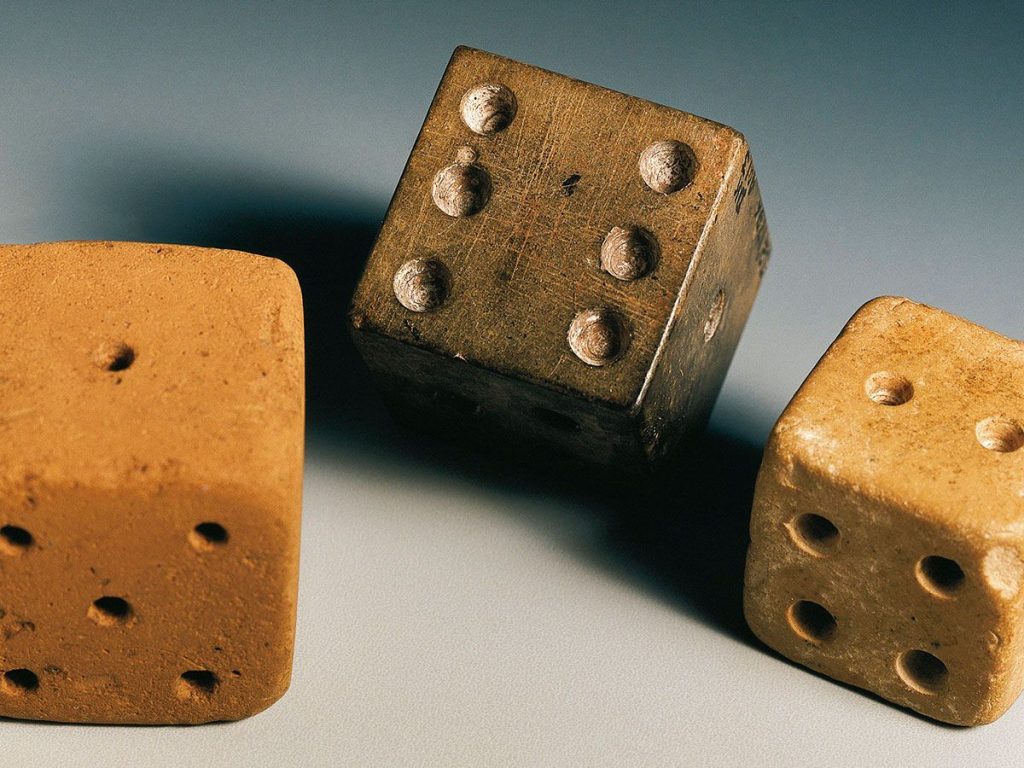Dice through time: Exploring origins, evolution, and cultural significance
Prepend to the content

Dice, basic yet symbolic geometric objects, have become integral to human history, leaving a permanent mark across civilizations and ages. From their mysterious origins in antiquity to their universal presence in modern gaming establishments, dice have transcended cultural boundaries and temporal divides, serving countless purposes ranging from entertainment to divination to gambling. In this comprehensive exploration, we start on a journey through time and space, revealing the complexity of dice, getting into its ancient origins, tracing their historical evolution, and examining their lasting cultural significance in diverse societies.
Origins of Dice
The origins of dice are concealed in mystery, with their inception likely arising independently in various regions of the world. Archaeological evidence suggests that dice have been in use for millennia, with early examples dating back to ancient civilizations such as Mesopotamia, Egypt, and the Indus Valley. These ancient artifacts, crafted from materials ranging from bone to precious stones, bore basic markings or decorations and served as tools of amusement, divination, and even religious ritual. The exact origin of dice remains elusive, leaving scholars to speculate on the diverse paths that led to their creation, reflecting the ingenuity and inventiveness of early human societies.
Early Forms of Dice
In ancient times, dice existed in diverse forms, far from the standardized six-sided cubes prevalent in contemporary gaming. Ancient dice were crafted from an assortment of materials such as sticks, shells, or seeds, often featuring asymmetrical outline and rudimentary markings. These primitive artifacts held cultural significance, playing integral roles in societal rituals and recreational pastimes across ancient civilizations. From the Aztecs to Native Polynesians, dice became symbols of chance, fortune, and communal bonding, leaving an enduring legacy that persists in modern traditions.
The Evolution of Dice
The evolution of dice witnessed a gradual transition from basic forms to the iconic cubic variations that dominate contemporary gaming. The oldest known examples of cubic dice date back to ancient Mesopotamia and the Indus Valley, crafted from materials such as clay or bone. These early dice laid the foundation for the standardized six-sided configuration that would later become universal in gaming. However, historical variations in dice configurations diverged from the modern “opposing sevens” arrangement prevalent in contemporary casinos, reflecting the dynamic nature of these artifacts across different eras and cultures.
Cultural Significance of Dice
Dice held profound cultural significance in ancient societies, permeating various aspects of life from leisure activities to religious practices. In Rome, dice served as essential components in games such as tali and tesserae, while in China, they featured prominently in liubo, a mysterious game steeped in tradition. Beyond mere entertainment, dice assumed mystical significance in the world of divination, with practices like astragalomancy among ancient Greeks and Romans attesting to their prophetic allure. Across civilizations, dice became symbols of chance, fortune, and human endeavor, shaping cultural practices and beliefs.
The Role of Dice in Modern Gambling
The arrival of modern gambling revolutionized the role of dice, as they became integral components of games of chance played in bustling casinos around the world. From craps to sicbo, dice games captivate players with their blend of skill and luck, offering the thrill of anticipation and the promise of fortune. However, with the rise of gambling came the need for stringent standards and regulations to ensure fairness and integrity in dice games. Regulatory bodies like the New Jersey Casino Control Commission enforce rigorous testing protocols, employing sophisticated tools to detect any irregularities and safeguard against manipulation and cheating.
Small modifications to a standard six-sided die can significantly alter the likelihood of certain outcomes, offering individuals the opportunity to manipulate their chances of winning in dice games. For instance, by creating imbalances such as loading one side with additional weight, commonly known as loaded dice, players can increase the probability of landing on specific numbers. Similarly, adjusting the dimensions of the die to make certain sides larger, termed as flats, can also skew the results in favor of desired outcomes.
In the world of regulated gambling, such as in Atlantic City overseen by the New Jersey Casino Control Commission, stringent protocols are in place to ensure fair play. Prior to gaming sessions, dice are securely stored and inspected by designated personnel. Visual examinations are conducted to confirm standard features like the sum of opposing sides totaling seven, the presence of official markings such as the casino’s logo and serial number, and to detect any irregularities like extra marks or defects that could facilitate cheating. Trained inspectors can discern abnormalities even from the depth of the dice’s dots.
The journey of dice through history reflects humanity’s quest for entertainment, divination, and chance. From their enigmatic origins in antiquity to their meticulously regulated existence in modern casinos, dice continue to captivate and intrigue, serving as enduring symbols of human ingenuity and cultural exchange. Across civilizations and eras, dice have left a permanent mark on society, transcending temporal and spatial boundaries to embody the timeless allure of chance and fortune. As we roll the dice of fate, let us remember the enduring legacy of these humble yet iconic artifacts that have shaped our collective human experience.
The post Dice through time: Exploring origins, evolution, and cultural significance appeared first on G2G News.



